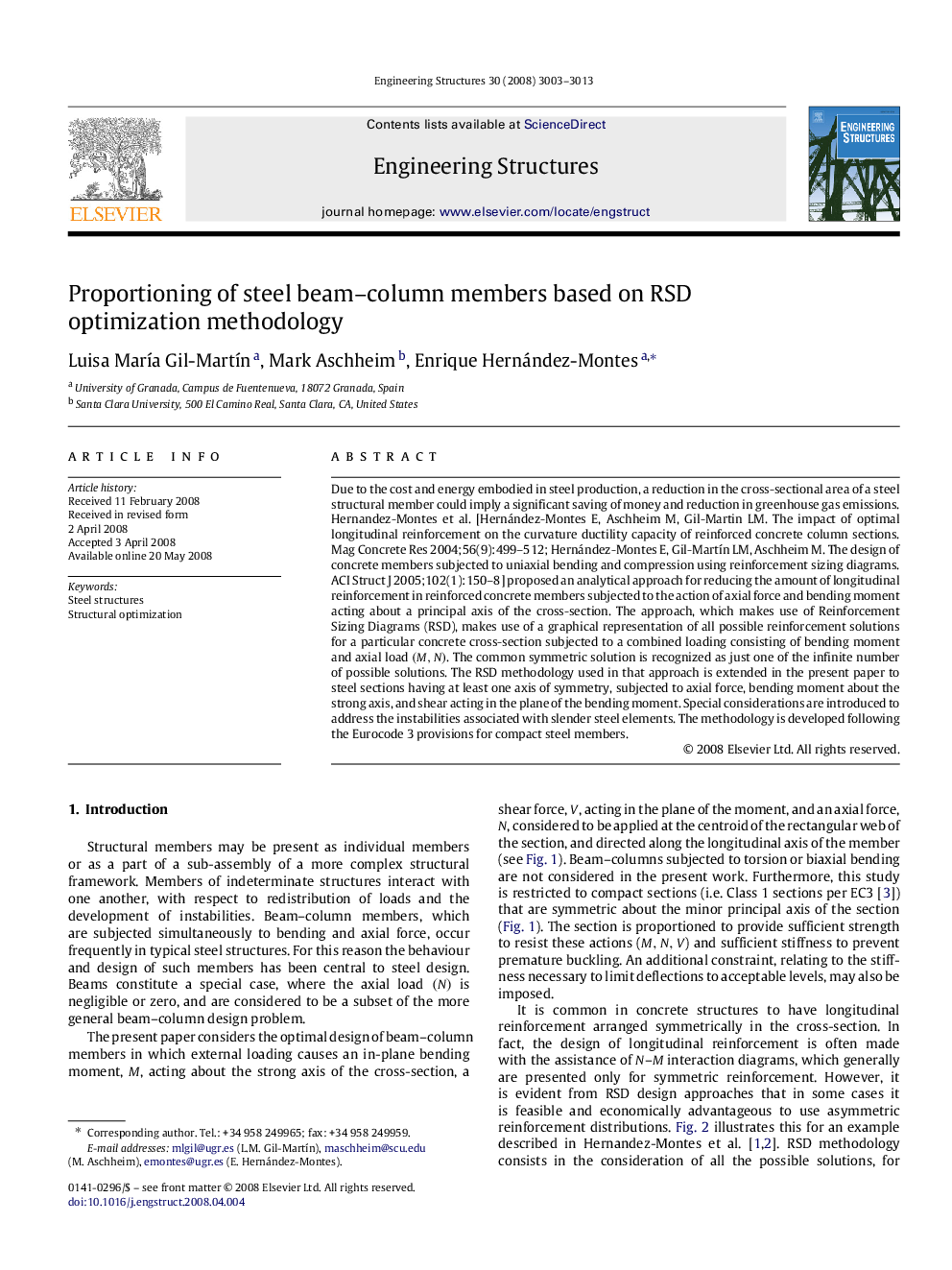| Article ID | Journal | Published Year | Pages | File Type |
|---|---|---|---|---|
| 268774 | Engineering Structures | 2008 | 11 Pages |
Due to the cost and energy embodied in steel production, a reduction in the cross-sectional area of a steel structural member could imply a significant saving of money and reduction in greenhouse gas emissions. Hernandez-Montes et al. [Hernández-Montes E, Aschheim M, Gil-Martin LM. The impact of optimal longitudinal reinforcement on the curvature ductility capacity of reinforced concrete column sections. Mag Concrete Res 2004;56(9):499–512; Hernández-Montes E, Gil-Martín LM, Aschheim M. The design of concrete members subjected to uniaxial bending and compression using reinforcement sizing diagrams. ACI Struct J 2005;102(1):150–8] proposed an analytical approach for reducing the amount of longitudinal reinforcement in reinforced concrete members subjected to the action of axial force and bending moment acting about a principal axis of the cross-section. The approach, which makes use of Reinforcement Sizing Diagrams (RSD), makes use of a graphical representation of all possible reinforcement solutions for a particular concrete cross-section subjected to a combined loading consisting of bending moment and axial load (M,N)(M,N). The common symmetric solution is recognized as just one of the infinite number of possible solutions. The RSD methodology used in that approach is extended in the present paper to steel sections having at least one axis of symmetry, subjected to axial force, bending moment about the strong axis, and shear acting in the plane of the bending moment. Special considerations are introduced to address the instabilities associated with slender steel elements. The methodology is developed following the Eurocode 3 provisions for compact steel members.
